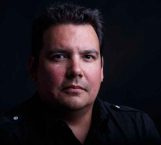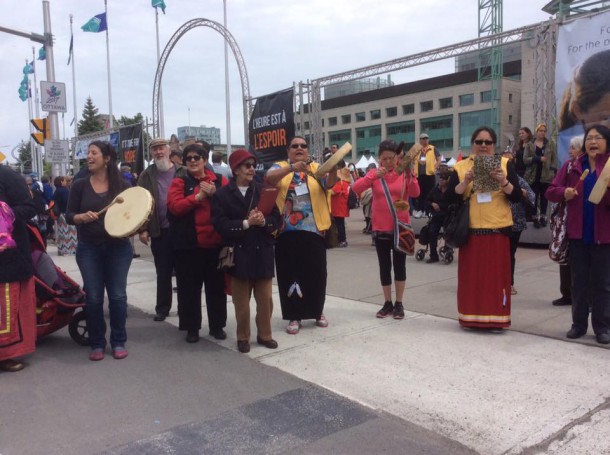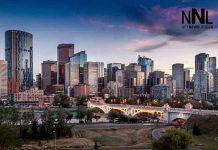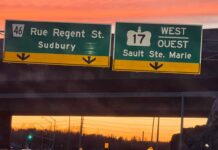WINNIPEG – In November 1948, Rev. Fergus John O’Grady wrote Indigenous parents a letter in his role as principal of the Kamloops Indian Residential School.
“It will be your privilege this year to have your children spend Christmas at home with you. The holidays will extend from December 18th to January 3rd.” He then said two rules must be followed: “the transportation to the home and back to the school must be paid by the parents” and “the parents must bring the children back to the school strictly on time.”
If that wasn’t demeaning enough, Rev. O’Grady then concluded with a threat: “I ask you to observe the above regulations in order that this privilege of going home for Christmas may be continued.”
O’Grady made “educating” Indians his career. After six years at Kamloops and expanding its programming to high school, he was made principal of Williams Lake Indian Residential School.
In 1956, he was announced in the national Catholic newspaper The Indian Missionary Record as the first Bishop of Prince George due to being “an outstanding worker in the field of Indian education.” O’Grady would then lead local missionization projects involving dozens of Indigenous communities.
In 1986, the year he retired, he received an honorary doctorate from the University of British Columbia.
A 2017 newsletter from the Diocese of Prince George celebrated him, calling him “a man of extraordinary vision… incapable of talking down to anyone.”
Well, anyone besides Indian parents.
“Priests who served with Bishop O’Grady,” the newsletter claims, “describe his vision as ‘a path to the right solution.’”
Well, it turns out that O’Grady was not just a leader in Indian education but deaths as well.
This past Thursday, May 27, news broke that the remains of 215 Indian students — some as young as 3 — were buried on the grounds of Kamloops residential school.
In a statement, Tk’emlúps te Secwépemc Kukpi7 (chief) Rosanne Casimir said that ground penetrating radar was used to find the children after community members and researchers started searching “in the early 2000s.”
“To our knowledge,” Casimir states, “these are undocumented deaths” and “affects communities across British Columbia and beyond.”
A search of the Kamloops school grounds continues.
I wonder what the Catholic church thinks of Bishop O’Grady now.
I wonder what UBC thinks.
I wonder what you think.
I know what Indigenous peoples think: we know about lost children.
Virtually every single Indigenous community has stories of lost brothers, sisters, aunties, and uncles.
At Truth and Reconciliation Commission events, empty chairs would be held to symbolize them, undocumented and lost but remembered through names and by family.
In the final report by the TRC, the commissioners document 3,201 deaths in residential schools but state that this is a “conservative number” due to lost, destroyed, and inaccessible documents held by the churches, schools, and government departments.
In the final report by the TRC, the commissioners document 3,201 deaths in residential schools but state that this is a “conservative number” due to lost, destroyed, and inaccessible documents held by the churches, schools, and government departments.
That number cannot be anything but a fraction.
From 1906-09, Dr. Peter Bryce, the chief medical officer for Indian Affairs, studied the situation of Indian children in residential schools and found disease, crowded and unsanitary conditions, and poor construction led to rampant sickness and a rate of 8,000 deaths per 100,000 students.
This doesn’t account for students who died later or while trying to escape, or the many murders that happened with tragic regularity.
A more accurate number is probably more than 15,000 – mostly buried in unmarked and unrecorded graves on or near residential schools.
The TRC tried to uncover and pinpoint unmarked burial sites, even though this was outside of its mandate.
On page 46 in volume 4 of the final report, it states commissioners asked the federal government to undertake an investigation but were refused.
The commission did, however, do research on the issue.
On Sunday, they released a report by Dr. Scott Hamilton from Lakehead University.
In the report are archival maps and Google earth images of indentations in the ground where cemeteries potentially lie (in fields “overgrown with grass, weeds, or woody vegetation” according to the report) or covered by buildings and roads.
The neglect and coverup of Indian student cemeteries happened in Canada with frightening regularity (one example I’ve written about previously is in Brandon — now covered by a trailer park).
There are more. Much more.
The Hamilton report states that many unmarked graves “lie abandoned and largely forgotten” recommending that “the federal government initiate multi-lateral engagement to identify strategies and procedures for the ongoing documentation, maintenance, commemoration, and protection of Indian Residential School Cemeteries.”
The problem, of course, is that governments have had countless opportunities to do this if they listened to doctors, researchers, and Indigenous peoples but they refused to do so.
Maybe they will listen now. I saw CNN covered the Kamloops story this week.
Cemeteries of Indian students have been lost due to neglect, poor-record keeping, and racism.
The lives within them simply didn’t matter to churches and governments.
The perpetrators were too busy finding “a path to the right solution.”
 Niigaan Sinclair
Niigaan Sinclair
Originally appeared in the Winnipeg Free Press in May 2021. Republished with the permission of the author.
The views, opinions, and positions expressed by all columnists and contributors are the author’s alone. They do not inherently or expressly reflect the views, opinions and/or positions of NetNewsLedger.
With thanks to University of Ottawa historian Daniel Ruck for contributions to this column.





